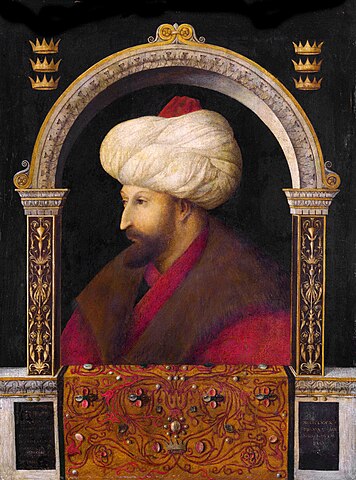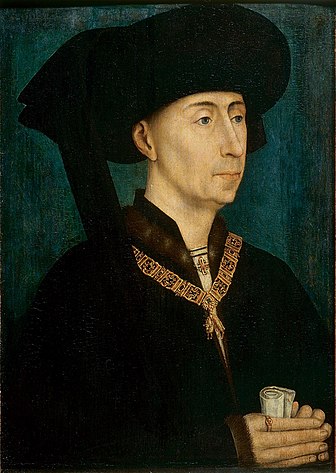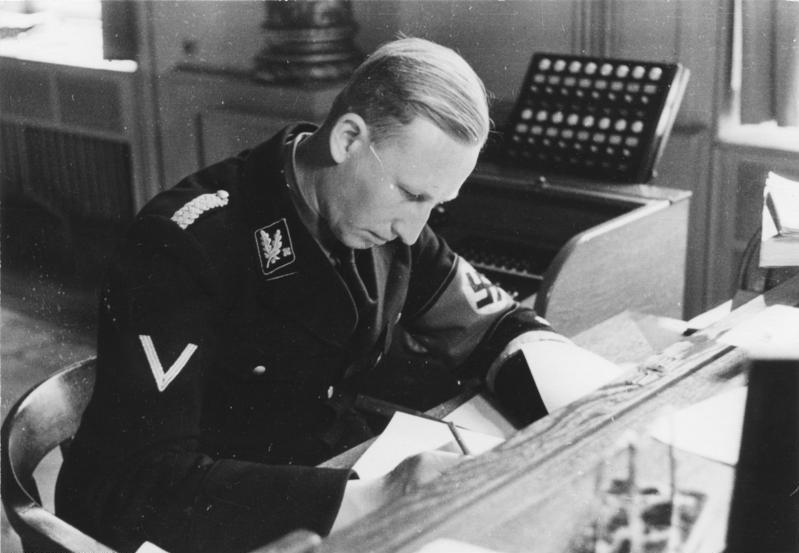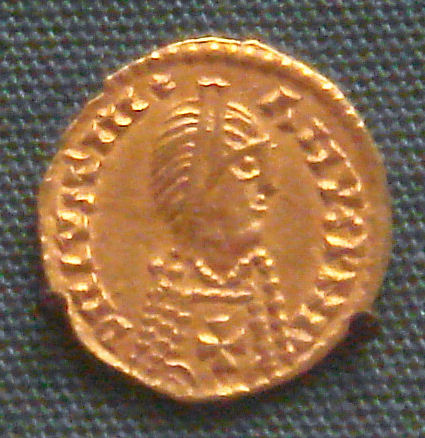After Theodora
Now the
situation in Italy was stalemate and Belisaurus decided to appeal to Justinian
through the medium of Antonina for money and re-enforcements. In midsummer 548
AD Antonina arrived in Constantinople to find the city in deepest black.
Theodora had died of cancer. Justinian was too wrapped up in his grief to see anyone
and was incapable of making decisions. Antonina arranged for Belisaurus’s
recall so that the seemingly certain loss of the empire in the west could not
be laid at his door.
Belisaurus’s
return to Constantinople was greeted with pleasure by Justinian. His doubts
about his friend had been nurtured by Theodora, whose death opened a
reawakening of the friendship between the two men. Justinian continued to mourn
Theodora until he died.
In 550 AD
disaffected members of the Byzantine garrison in Rome opened the gates to the
Goths, who now gave every indication that they were prepared to stay, taking
over empty homes. The senate was re-opened and refugees were encouraged to
return; whilst damaged buildings were repaired.
Totila not
only presided over games in the Circus Maximus, but his fleets were ravaging
the coasts of Italy and Sicily, returning in 551 AD loaded with plunder. In
response Justinian decided to send a force under the command of his cousin
Germanus, long overlooked as Theodora had conceived a dislike of this able
general.
‘Such savage enmity against
Germanus had the empress conceived – enmity of which she made no secret at all
– that although he was the emperor’s nephew[i] no
one dared marry into his family, and his sons remained single until their best
years were gone.’[ii]
Germanus had
also recently married Matasuntha, widow of an Ostrogoth king who had died in captivity
in Constantinople. Matasuntha was the granddaughter of the Ostrogoth king
Theodoric.
Germanus had
an army larger than any ever assigned to Belisaurus, but his death in Sardica[iii] in the autumn left his
army leaderless. The childless Justinian had just lost a potential successor.
The recall of the army would lead to a tacit admission that Totila had won his
fight for Italy. Instead Justinian sent Narses, now in his late seventies, to
Italy to command his troops.
Ancient Generals Victorious
There were
only four cities left in Italy under Byzantine control – Ravenna, Hydruntum,
Ancona and Crotone. Narses had an army of 35,000 men, larger that commanded by
Germanus. They left Constantinople in the spring of 551 AD but spent most of
the year in Thrace and Illyria recruiting more troops. The march into Italy
began in 522 AD overland to Ravenna, where Narses was able to give the remnants
of the local troops their long overdue pay. They then marched down the
peninsula
At the end
of June the decisive battle for Italy took place near a town called Taginae on
the Via Flaminia. The outclassed Goth army fled in the evening and Totila,
mortally wounded, died in the village of Caprae[iv]. The Goths elected one of
Totila’s generals as their new leader, to continue the struggle. Narses marched
south where city after city opened its gates to the victor. Rome fell after a
brief siege. Narses had been informed that the majority of Totila’s treasury
was held at Cumae. He was determined to emancipate the bullion and treasure
before the remnants of the Goth army could reach the town.
The new Goth
king had the same aim in reverse and the two armies met at the end of October
552 AD. Again the Goth army was defeated and their king was killed by a
javelin, and the following day the few Goths left agreed to terms. They were to
leave Italy and agree to indulge in no further fighting against the empire. In
return the Goths were allowed to take all their movable goods with them and
promised that they would never be forcibly conscripted into the imperial army.
At the same
time an imperial army under the command of a general, probably in his
mid-eighties - Liberius[v] was marching through Spain.
According to Procopius there had previously been a falling out between
Justinian and Liberius. Following a dispute with an official who had taken over
Liberius’s post in Egypt the two came to blows and the new post holder was
killed.
‘Liberius was instantly
summoned to Byzantium. Where the Senate, after making a thorough investigation
of the case, acquitted him, as he had not been the aggressor but had been
defending himself when the dreadful thing happened. The emperor, however, did
not allow the matter to drop until he had secretly forced him to pay a heavy
fine.’[vi]
Visigoth gold tremisses in the name of Justinian
In 551 AD
Athangild, a relative of the reigning Visigoth king in Spain, Agila, rebelled
against his sovereign. Athangild called for help to Justinian, providing the
Byzantines with an excuse for intervening. At the same time the citizens of
Cordova were in a state of revolt against the Visigoth overlords.
Circa two to
three thousand men were despatched from Narses’ army to Spain to support
Athangild. The Visigoth army was divided in its loyalties and it did not take
Liberius long to take control of the country below a line drawn from Valencia
to Cadiz. In 555 AD Agila was murdered by disaffected troops and Athangild
assumed the crown. An agreement was reached between the new king and Liberius;
the empire would retain the lands it had conquered, keeping control of the
Balearic islands, even if it did not possess the soldiers to control the lands
that Liberius had conquered.
Religious Issues, Violent Answers
Pope Vigilius
felt that his support for Justinian’s edict of 544 AD had been won as the
result of blackmail. The Pope had also been concerned by the reaction to his
support. His attempts to regain control of the church in the West had brought
him into divergence from the emperor. When Justinian issued a second edict on
what Justinian believed were the basic tenets of Christianity and ending with a
violent condemnation of the works maligned in the first edict, Vigilius
protested that the edict went beyond the principles of Chalcedon and urged
Justinian to withdraw it.
There
appears to have been other issues relating to the priesthood that emperor and
Pope disagreed over.
‘But Vigilius, who was in
Byzantium at the time, flatly refused to yield to the emperor if he should issue
such instructions[vii].’[viii]
In the event
Justinian refused to withdraw the edict and an assembly of both eastern and
western bishops pronounced against it, and forbad any cleric to say Mass at a
church that exhibited the edict. Two clerics ignoring the pronouncement were
immediately excommunicated. Justinian flew into a rage and the Pope took refuge
in the church of St Peter and St Paul. The city police, members of the imperial
guard and the Praetor of the People attempted to drag the Pope out of the church.
A crowd had gathered by the time the altar the Pope was clinging too, fell
about his head. They vigorously protested this treatment of the Pontiff.
The soldiery
departed and the next day Belisaurus arrived to give Vigilius the emperor’s
regrets for the invasion, assuring him that he could return to his residence.
Upon his return Vigilius discovered that he was being kept under close
supervision, approximating to house arrest. In the night of 23rd
December 551 AD Vigilius exited the palace that had been loaned to him, taking
a small boat to Chalcedon, and positing himself in the Church of St Euphemia.
Belisaurus was again sent to plead with the Pope, who this time refused to
budge. Vigilius produced an Encyclical giving his side of the dispute. In the
spring the Patriarch and other excommunicated bishops, under orders from
Justinian, humbled themselves before Vigilius in an attempt to break the stand-off.
Vigilius
returned to his palace and Justinian’s latest edict was withdrawn. Justinian
now decreed that a new ecumenical council, under the chairmanship of Vigilius,
should reconsider the matters under dispute. The new council met on 5th
May 553 AD, without Vigilius, who now disagreed with Justinian on the way the
council was to work. The council was led by the new Patriarch Eutychius.
Vigilius wrote a paper to counteract one written by Justinian. But
unfortunately for him, Justinian was in a position where he did not need to
pacify Vigilius; as the West of the empire was now firmly in the hands of the
Byzantines.
In response
Justinian decreed that Vigilius’s name be struck from the diptychs. The
ecumenical council formally endorsed the emperor’s decree. Vigilius was sent
into exile and told that he would not be allowed to return to Rome until he
accepted the council’s findings. Six months later, in great pain from kidney
stones, Vigilius capitulated.
The Road to Death
It took
Justinian another ten years to die. Years that saw a deterioration in his
abilities to rule and which adversely affected the empire. Yet Justinian was
unwilling to delegate responsibility. Money was short and whereas in previous
years Justinian would have found the monies by one means or another, now he
left things to his ministers.
Defence of
the empire had always been one of the emperor’s priorities, but by 555 AD
Justinian had allowed the imperial army to fall to a mere 150,000 men, from a
high of 645,000. The frontier fortresses he had caused to be built in the
dynamic years of his reign, now stood abandoned. In his declining years the main
focus of Justinian’s energies was religion.
Enormous
sums of money, from an almost bankrupt treasury, were paid to the Persians for
a fifty year peace treaty in 556 AD. In 559 AD a tribe of Huns swept down into
Thessaly and Thrace to within twenty miles of the capital. They followed in the
footsteps of Slavs who overran the Balkan peninsula in 548 and 500 AD.
To see off
the Huns Justinian called Belisaurus back to duty. Belisaurus and his troops
ambushed the Huns and drove them back to their base camp near Arcadiopolis[ix]. Justinian did not allow
Belisaurus to wipe out the Huns, as he may have been able to do, but bought
them off with promises of subsidies. For this Justinian awarded himself a
triumph. It is possible that he was again jealous of Belisaurus’s military
capabilities. Belisaurus retired back into private life.
In the
autumn of 562 AD a conspiracy against Justinian was uncovered and one of the
conspirators named Belisaurus as being involved. There was no proof but
Belisaurus had all his dignities and privileges removed. It took eight months
to persuade Justinian that Belisaurus was innocent and to reinstate him.
On 14th
November 565 AD Justinian died; eight months after Belisaurus. The dynamic
Justinian was a force for expansion in his early years as emperor, backed by
the indomitable Theodora. Once he lost his wife much of his enthusiasm expired
too. His policy of buying off enemies failed to take into account the premise
that more enemies might be attracted by the allure of enormous bribes.
Some
consideration should be given as to why Procopius was so malevolent towards
Justinian and Theodora and the reasons for writing his Secret History, which is
often at odds with his publically acknowledged works. As a supporter of
Belisaurus, Procopius had some motives for traducing the imperial couple and
Antonina.
Bibliography
Byzantium –
The Early Centuries – John Julius Norwich, Folio Society 2003
The Secret
History – Procopius – Folio Society 1990
En.wikipedia.org
[i]
There seems to be some discrepancy between Procopius and Norwich as to the
relationship between Germanus and Justinian
[ii]
Secret History - Procopius
[v]
Records show that Liberius was Praetorian Prefect in Italy 60 years previously
[vi]
Secret History - Procopius
[vii]
To reinstate a priest who had treated his flock in Alexandria with cruelty, had
been defrocked, and now agreed with Justinian to purchase his priesthood by
paying £105,000 to the emperor.
[viii]
Secret History - Procopius











.jpg)

